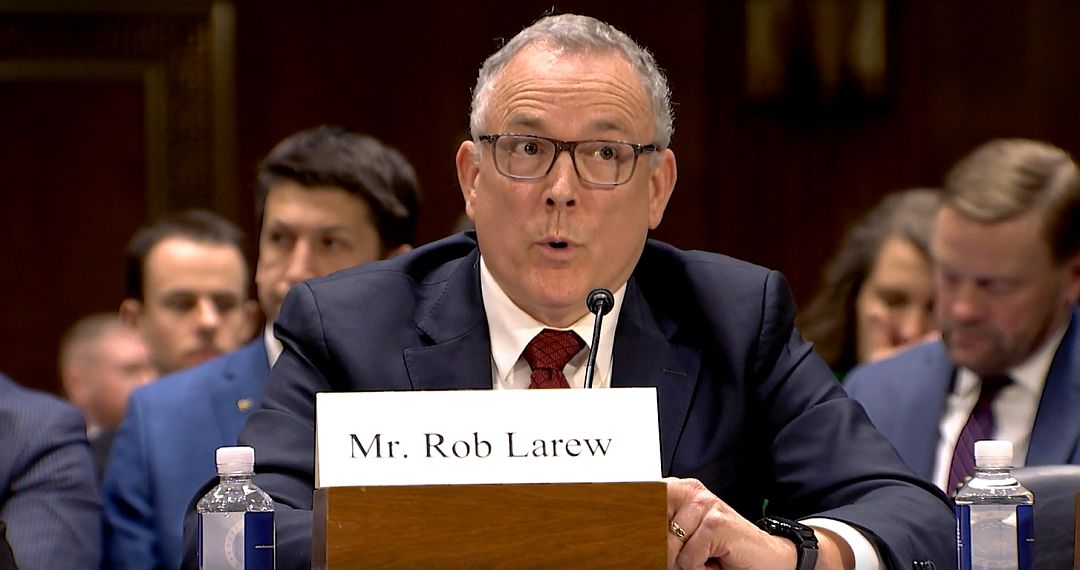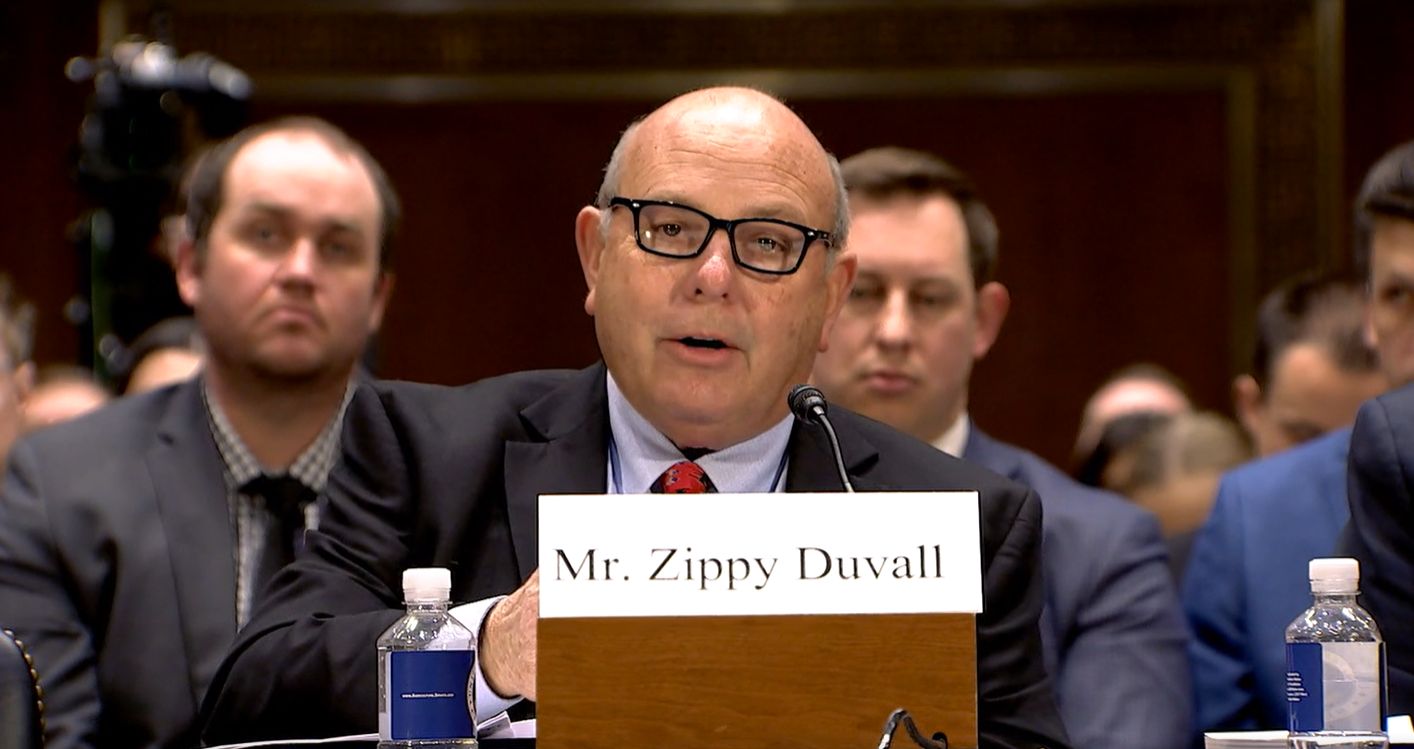Attempts to undermine consumer confidence in seed oils—which Trump cabinet pick RFK Jr says are “poisoning” Americans—could seriously damage US soybean farmers, who are already “deeply concerned” about an escalating trade war trigged by “tit for tat” tariffs, says the American Soybean Association (ASA).
Speaking at a hearing organized by the Senate committee on agriculture, nutrition, and forestry yesterday, ASA chairman Josh Gackle told lawmakers: “When threats arise that impact soybean exports, US producers look to domestic markets to cushion the blow.
“Right now, however, significant uncertainty is tied to federal policy impacting domestic markets for soybean oil, both for food use and biofuel production. And increasing rhetoric perpetuating false claims about the detrimental health impacts of soybean oil and other seed oils, paired with threats of banning these products from domestic food use, raise questions about US soybean farmers’ continued access to this market.”
Soybean oil consumption for edible uses “is a stable market that has provided continued certainty for our farmers,” he said. “Removing that market would cause an immediate and significant decline in soybean oil prices” at a time when the soybean industry is still trying to rebuild markets following the 2018 trade war with China, he claimed.
2018 trade war caused ‘irreparable and long-lasting harm’ to US farmers
As the number one export crop for the US, soybean producers face “significant, disproportionate impacts from trade flow disruption,” he added, claiming that moves by Brazil to increase soybean production to supply the Chinese market after China imposed tariffs on US soybeans in 2018 had caused “irreparable and long-lasting harm” to US farmers.
He added: “As a result… our industry now faces increasing competition with Brazil in every export market, not just China.”
Should the Trump administration follow through with threats to impose a 25% tariff on imports from Canada, meanwhile, farmers would get hit by higher fertilizer costs, given that “approximately 87% of potash—a critical fertilizer input used in the US—comes from Canada,” he noted.
More generally, he said, tariffs will strengthen the US dollar, which “increases the price our foreign buyers see. Brazil’s currency has depreciated continually for years, which gives it an export advantage over US soy exports.”
Stepping back, he said, the US had an “abundant” soy harvest this year, while Brazil is anticipating a “record” harvest, and Argentina is looking at its “largest harvest in years.” At the same time, China, the world’s largest buyer of soybeans, is facing economic woes and “shifting purchases toward Brazil amid tariff uncertainty. This economic downturn results in a diminished demand for US soy at a time of excess supplies.”

Potash from Canada
Rob Larew, president at the National Farmers Union (NFU), added that uncertainty over whether tariffs will be applied to Canadian goods is already having an impact on the market. “We’re hearing about suppliers of fertilizer and other goods who are already adding costs onto goods… we’re hearing some places that are not selling for delivery products beyond a certain date because of the threat of a tariff.
“I was just in Indiana talking to a farmer who the whole time we were talking was on the phone trying to get product across the Canadian border before any potential threat there. So the threat brings real impact.”
He added: “The trade dispute with China and other nations during the first Trump administration deeply impacted family farmers and ranchers, and that experience could be repeated in the coming months.”
“Mexican beer producers purchase US barley to produce unique brands that are then exported back to this country for US consumers. Growers, companies, and consumers benefit from a smooth, tariff-free flow of goods to remain competitive.” Chris Engelstad, president, National Barley Growers Association
Funding freezes and ‘abrupt and confusing policy shifts’
In prepared remarks, Larew also highlighted concerns from NFU members about the impact of recent federal funding freezes, which he claimed could “jeopardize the government’s ability to respond effectively” to animal disease outbreaks, “delaying critical disease monitoring, relief efforts, and the evaluation of vaccination strategies.”
He added: “By halting essential funding and issuing sweeping directives with little clarity, the administration is disrupting many existing programs our communities rely on. The interruption in funding also calls into question whether already obligated funds will be disbursed to farmers and ranchers who have held up their end of program agreements with USDA.”
This “abrupt and confusing policy shift” has meant that state and local agencies have struggled to interpret and implement federal programs,” he said. “We encourage this committee to seek further explanations and clarity from the administration to limit negative impacts on the farm economy.”
Senator Amy Klobuchar, D-MN, added: “We’ve heard from farmers who have purchased tens of thousands of dollars in cover crop seed only to receive notice that disbursements for these costs are paused.
“We remain deeply troubled by the administration’s pause on conservation support for farmers and we would like to make sure that we reduce this chaos and makes it easier for our farmers to do their good work.”

“Tariffs open American farmers to retaliatory tariffs, and we’ve seen this before. What our farmers want is trade, not aid. A tariff on Canadian potash could increase fertilizer costs by as much as $1.70 an acre for corn and $1.42 an acre for soybeans. American farmers have worked for decades… to improve their international market access… we need to build on, not roll back this progress.” Sen. Amy Klobuchar, D-MN
‘Farmers and ranchers on average receive only 15.9 cents of every dollar that consumers spend on food’
While other farming group representatives who spoke at the hearing also raised concerns about tariffs and trade, most focused on the urgent need for a new farm bill, with reforms of crop insurance, Agriculture Risk Coverage (ARC), and Price Loss Coverage (PLC) to support farmers in an increasingly volatile environment.
According to Larew at the NFU, returns on many row crops were negative in 2023 and 2024 and are projected to be negative in 2025. Against this backdrop, he said, payments through the programs outlined above provide “limited protection against low commodity prices, especially considering higher costs of production.”
He added: “Farmers and ranchers on average receive only 15.9 cents of every dollar that consumers spend on food. Corporate concentration in agriculture and food supply chains have created uncompetitive agricultural markets that drive down the farmer’s share of the retail food dollar while also raising costs for inputs.”
Zippy Duvall, president of the American Farm Bureau Federation, noted that crop prices peaked in 2022, and have since “taken a nosedive” while input prices have remained high, putting farmers between a rock and a hard place.
Further reading:
USDA nominee promises financial aid to farmers to offset “devastating” impact of a trade war
Tariff whiplash: Uncertainty is driving inefficiencies in CPG supply chains, says consultant
Navigating tariffs and trade in 2025: ‘There will be carnage’




